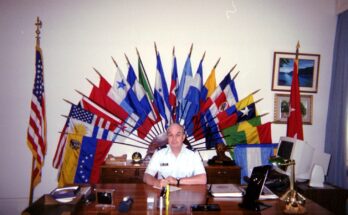
If you love books, especially history, and even more especially local history, you are no doubt familiar with the many books written by retired Naval Captain, and long time Historian for both the Great Falls/Cascade County Historic Preservation Commission and Overholser Historical Research Center located in Fort Benton. Honors include awards for his books, and being named as a Montana Heritage Keeper for his work in Historic preservation and research.
Unlike his earlier titles, which ranged through time and space in all of Montana, Ken’s latest book published by the History Press stays close to home, in space if not in time. Lost Great Falls is sure to trigger memories of those who love our fair city, along with perhaps a few tears for the buildings and structures that exist only in those memories, and the photos, maps and drawings with which this volume is lavishly illustrated.
Step back to 1879, when Paris Gibson looked at the “incomparable” falls of the broad Missouri river and envisioned a city to rival his beloved Minneapolis, lit up by hydroelectric power. But before that, briefly the ford which had served wildlife and Indigenous peoples for centuries sprouted the aspiring settlement of Johnstown, named after John Largent of Sun River. (The Largent name, if not John himself, figures in the rise of Great Falls, the rapidly growing rival of Johnstown.) But with the design and plans in Gibson’s head, and the means to achieve them, the new town of Great Falls grew to be the largest city in the state, in little more than 50 years. Alas, when the license plates first sported numbers indicating county populations, Great Falls had fallen to number 2, outstripped by Butte.
Even before the city was incorporated in 1888 with Paris Gibson as the mayor, building a school was a high priority. The structure was started in 1884 and completed in 1885, with J.M. Largent as the first teacher. Before long, a second building was needed for the influx of eager students. Later, the original, “First School” served many functions, until it was moved to Paris Gibson Square in 1978, to be preserved and restored. Sadly, not enough money materialized to save this, and one of the oldest symbols of the aspirations of Great Falls fell.
A mere three years after the small wooden dwelling filled with students, the three-story Minot Building sprang to life in local brick and stone. Along with the offices of the newly formed Cascade County, the First National Bank and the Great Falls Water-Power and Townsite Company occupied offices there. This important block at 201 Central also boasted the Alcatraz Theater and the famous Silver Dollar Saloon. Not even the ghost of Charlie Russell could save it from the wrecking ball, or unbelievably, his other favorite haunt, the Mint.
From these earliest, proud emblems of the “great Great Falls”, to the iconic and irreplaceable Big Stack, the city lost, gave away, destroyed a host of important, beautiful, beloved structures that embodied the history of “our fair city”. Ken Robison has brought them back, if only in images and words. Let us remember what we can, shed a few tears, and vow to not let it happen again.



